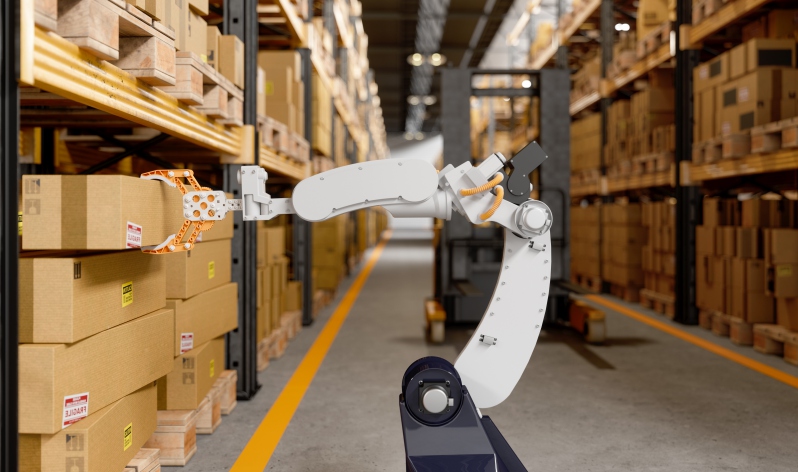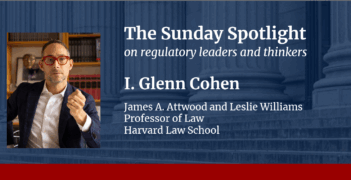
Scholar advocates new research on current and emerging uses of advanced technologies.
In the spring of 2021, Amazon announced a new direction for its famous smart assistant, Alexa. For the first time, the company will allow third parties to develop smart assistants compatible with Alexa’s voice technology, increasing entertainment options for customers. But the applications for artificial intelligence (AI) stretch far beyond consumer entertainment to a variety of automated manufacturing and business management techniques.
And yet exactly how and where businesses use AI is not well understood, according to a recent report by Robert Seamans, an associate professor of management and organizations at the Leonard N. Stern School of Business. Seamans argues that the U.S. Census Bureau should collect more data on the uses and effects of AI to fill a gap in information about AI’s role in the national economy.
Seamans observes that “there have been no large scale, systematic studies in the U.S.” on how advanced technologies affect economic output and labor relations. Instead, academic papers that rely on data from members of the International Federation of Robotics reveal only a partial picture of how AI can transform a business’s operations.
Data from European manufacturing firms, for example, suggest that some overseas businesses have streamlined their workforces due to the adoption of automation, while other firms have brought on more employees after adding AI. Further complicating the picture, competitors of AI-adopting firms lose jobs too, so even if some firms increase employment, losses by competitors could still result in a net loss of jobs as AI enters a particular sector or geographic market.
These observations come from aggregated data gathered in countries such as France and Spain. But so far, similar nationwide datasets in the United States elude researchers. The Census Bureau does produce annual surveys of businesses operations—such as the Annual Business Survey, the Annual Capital Expenditures Survey, and the Annual Survey of Manufacturers—but it has only just started to incorporate questions about AI into these data-gathering efforts.
Expanding the ability of the Census Bureau to capture this data would require a significant financial commitment. Seamans admits that the cost of creating, modifying, and updating surveys eats up substantial funding, sometimes from other federal agencies, such as the National Science Foundation.
Seamans also notes that a similar survey, the Survey of Manufacturing Technology, began under the direction of the Census Bureau and the U.S. Department of Defense in 1988, 1991, and 1993, but it was discontinued because of inadequate funding. Seamans urges the U.S. Congress to appropriate funds for the Census Bureau to create a new AI survey and to maintain it for more than one iteration.
Designing a new AI survey would require intense cognitive testing of proposed questions to ensure that resulting data would accurately reflect reality. This vetting needs to account for how firm managers use AI throughout their entire business—including at different facilities that occupy or cross into various economic sectors. One large firm may operate many such facilities along a given supply chain.
In his report, Seamans sees data from each facility as crucial to building a comprehensive understanding of AI. The data from a nationwide AI survey could then be linked to other Census Bureau datasets and statistics from other federal agencies.
By cross-analyzing all of these data, the Census Bureau can develop a more complete view of AI and form a foundation that can be built upon each successive year. Policymakers can draw from this information to craft fiscal policies and economic regulations in tune with how the economy shifts toward advanced technology.
The Council of Economic Advisers (CEA) in both the Obama and Trump Administrations also identified the value of collecting information on business use of AI. In 2016 and 2019, for example, the CEA’s annual Economic Report of the President contained chapters discussing the links between artificial intelligence and productivity, growth, and labor. Each report, however, relied only on high-level data without the depth and breadth of the survey suggested by Seamans.
Seamans points out that “AI and robots are everywhere, except, as it turns out, in the data.” His proposal for a new Census Bureau survey would close the gap between the popular imagination of AI and a solid understanding of its real, immediate effects. The rapid adoption of artificial intelligence by U.S. businesses promises to transform the way Americans work, but, in Seamans’s view, the U.S. government cannot effectively respond to these changes without guiding data from across the nation.
The Biden Administration released its $2 trillion infrastructure plan at the end of March 2021, and the plan provided nearly $200 billion for increasing the federal government’s AI capacity. This funding would largely bolster military and counterintelligence efforts, but nearly $50 billion would head to the National Science Foundation for a “technology directorate” responsible for building and integrating AI systems across different agencies.
Before those funds are used to introduce AI to government operations, however, they could support the comprehensive data collection program Seamans proposes to understand what already exists in the business world.



